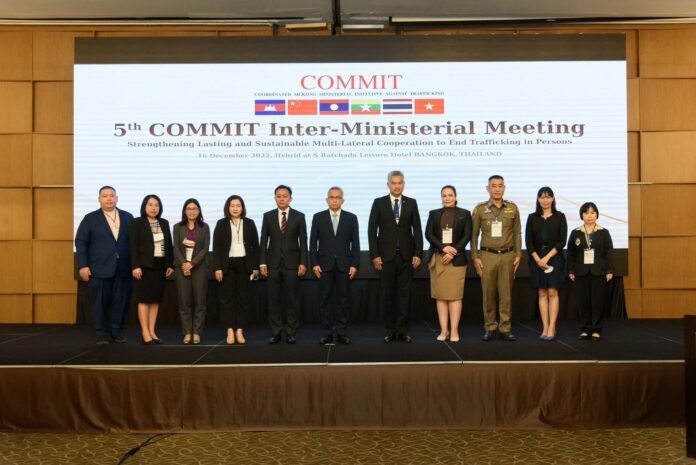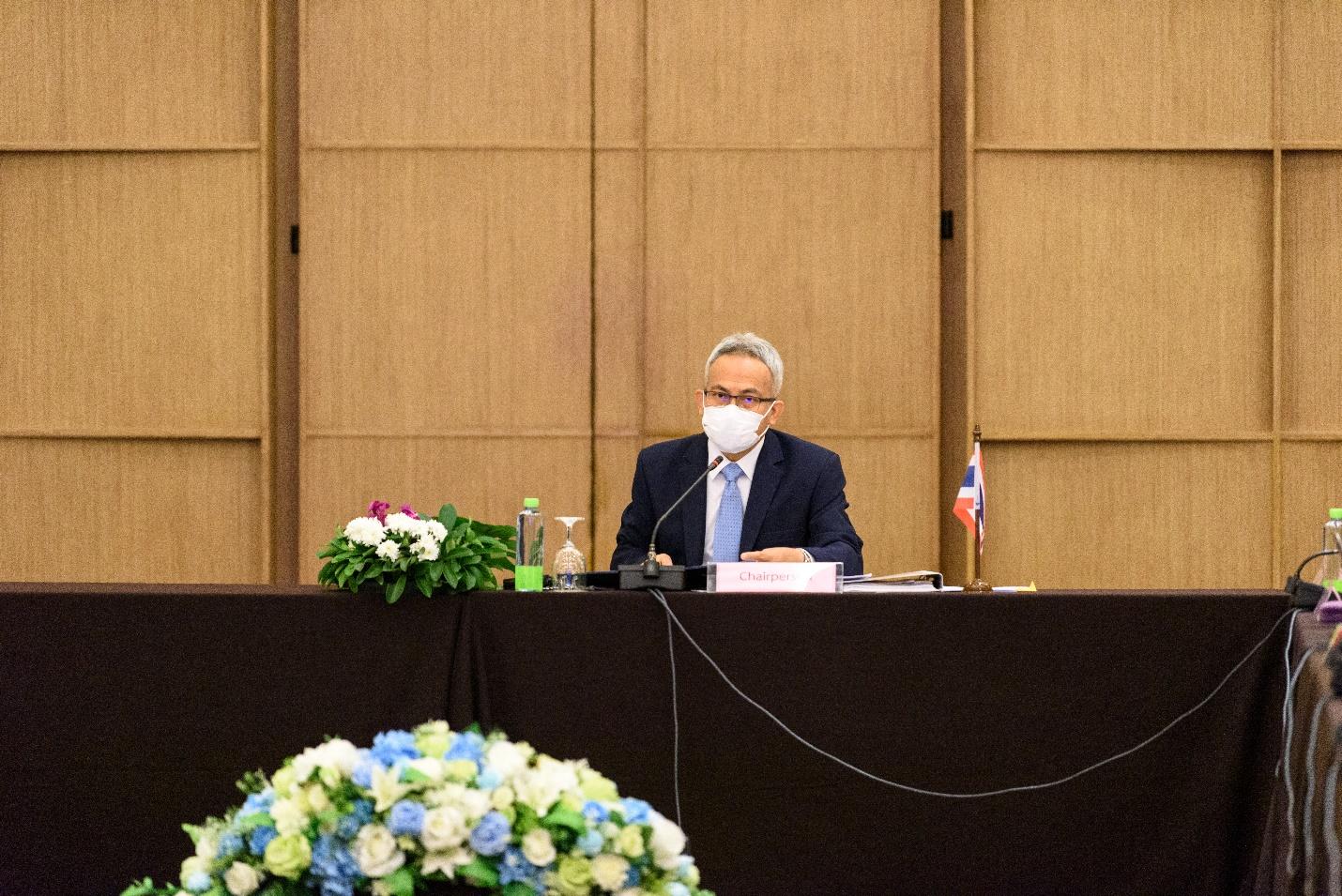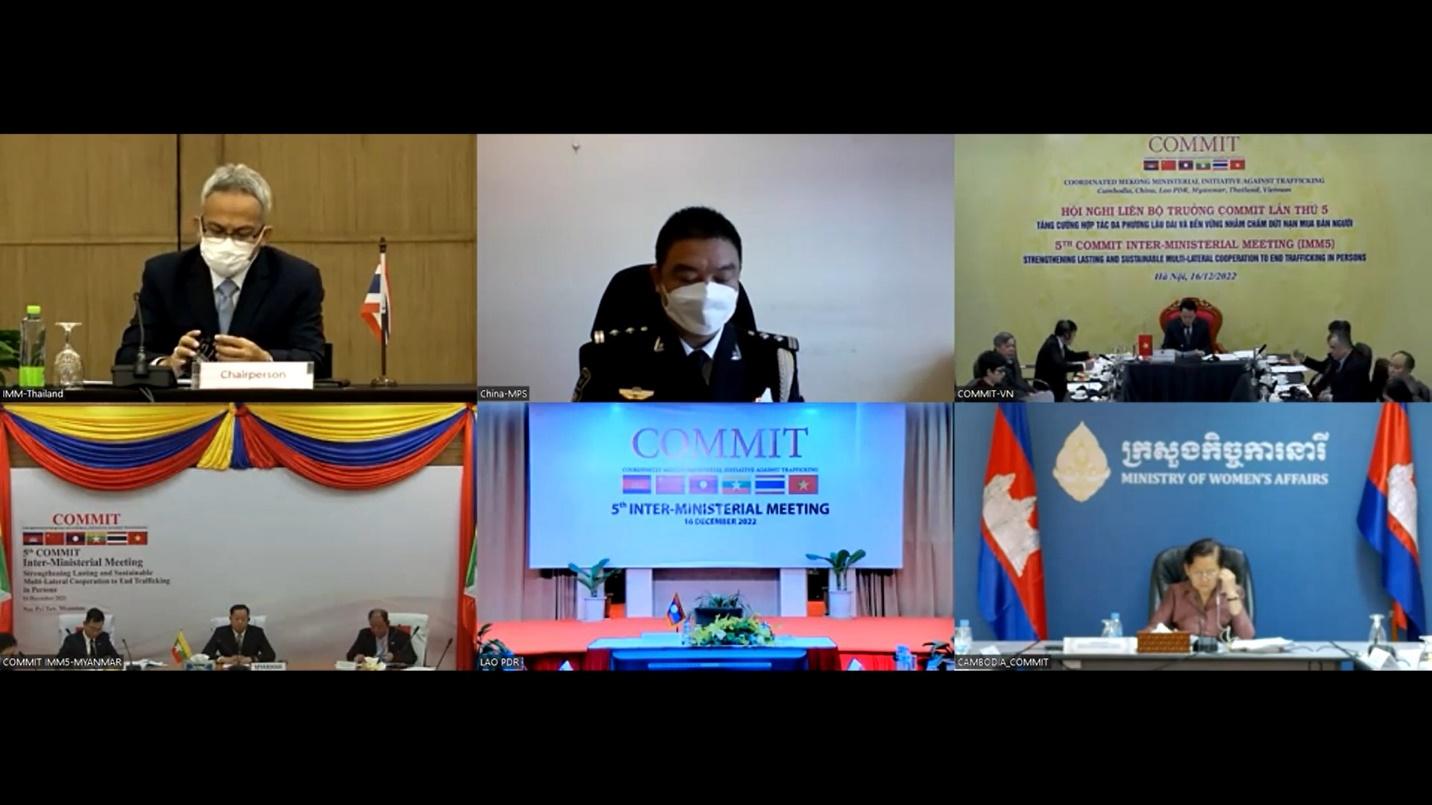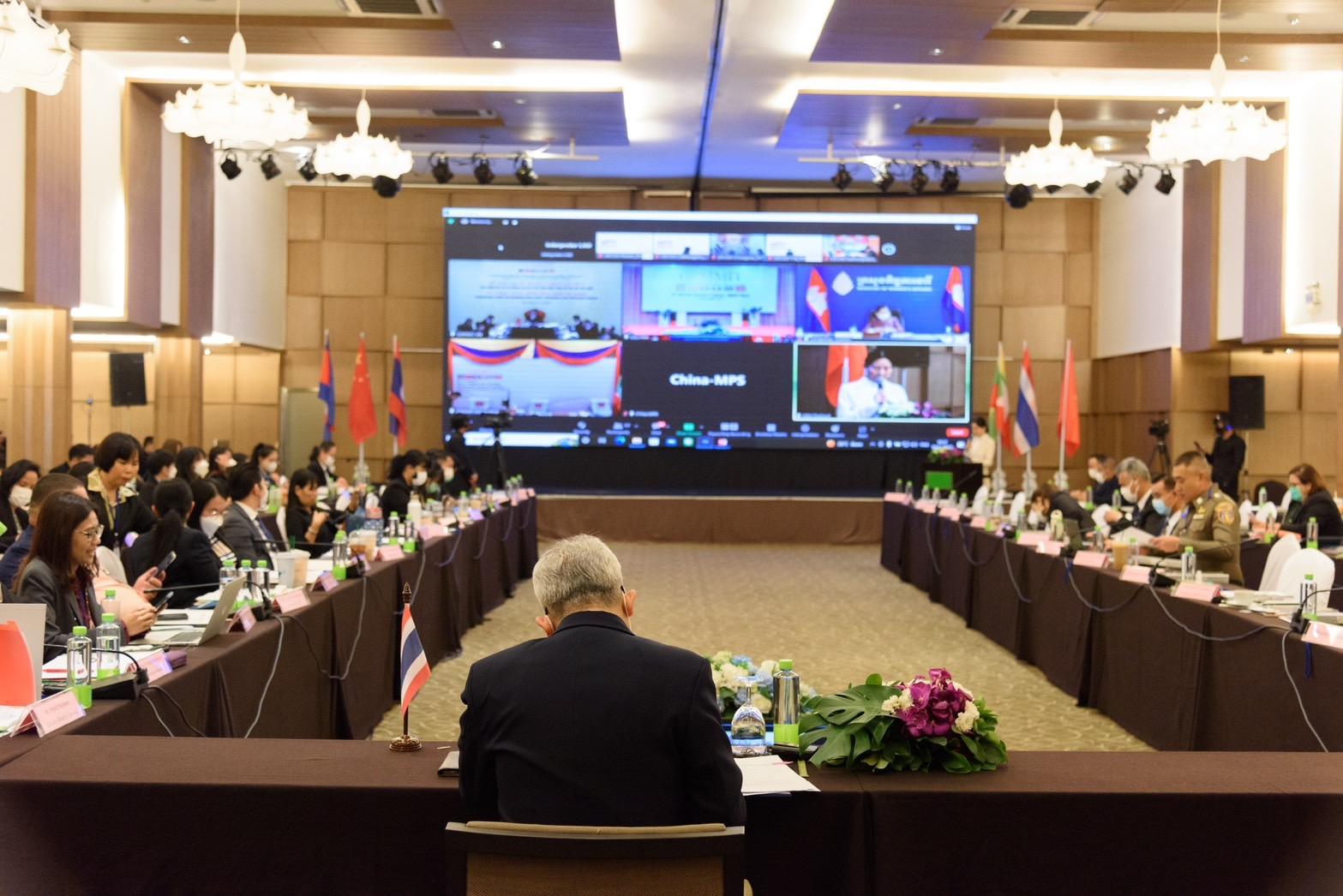
The Ministry of Social Development and Human Security, led by Mr. Anukul Peedkaew, Permanent Secretary, organised a meeting in line with the Coordinated Mekong Ministerial Initiative Against Human Trafficking (COMMIT Process) in a hybrid online and onsite format at S Ratchada Leisure Hotel, Bangkok on December 15-16, 2022. Participants included over 200 representatives from six member countries, namely Cambodia, China, Laos, Myanmar, Vietnam, and Thailand.

At COMMIT Regional Task Force Meeting (COMMIT RTF) on December 15 member states exchanged information on the situation and solutions to human trafficking. They reviewed the implementation of the action plan in phase 4 in effect from 2015 until the end of December 2022, which led to discussions to set a framework for the development of the next action plan in phase 5.

On December 16, the 5th Inter-Ministerial Meeting (IMM 5) was held under the theme of “Strengthening Lasting and Sustainable Muti-Lateral Cooperation to End Trafficking in Persons”. Since the crime of human trafficking cannot be dealt with and solved by any country alone, the meeting showed the results and successes in various fields of the COMMIT RTF action plan in phase 4 and made a joint agreement on the development of the action plan in phase 5 among the six countries.


“Creative cooperation between member countries is a very important factor in addressing the problem of human trafficking in the Greater Mekong Sub-region and sustainability of the COMMIT Process. Addressing the challenges and new forms of human trafficking can’t happen by only government action alone. Therefore, a paradigm shift and cooperation with all sectors is required to combat human trafficking,” said Mr. Anukul.
“Thailand is committed to close cooperation with all COMMIT member countries to combat human trafficking in the Greater Mekong Sub-region for the good quality of life of people in the sub-region.”











































